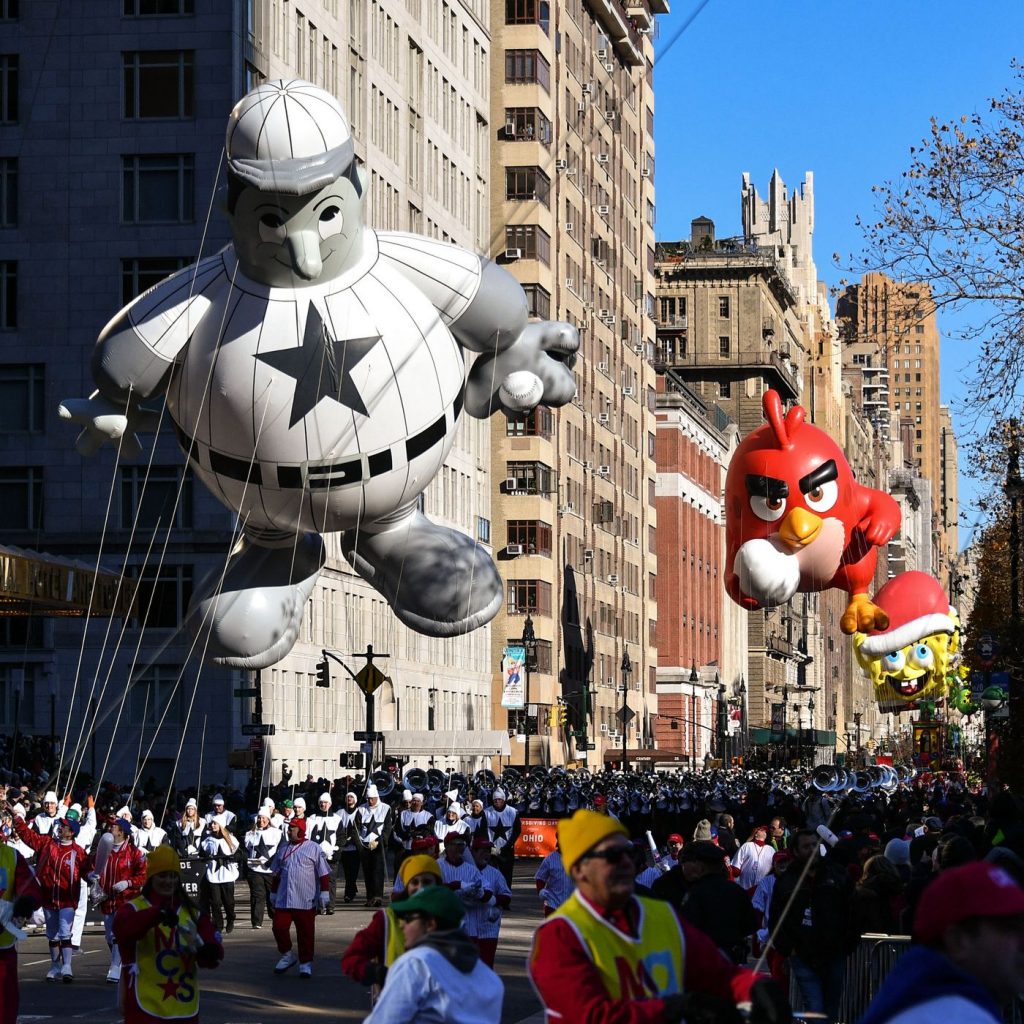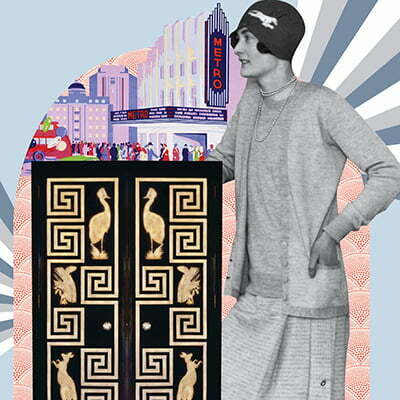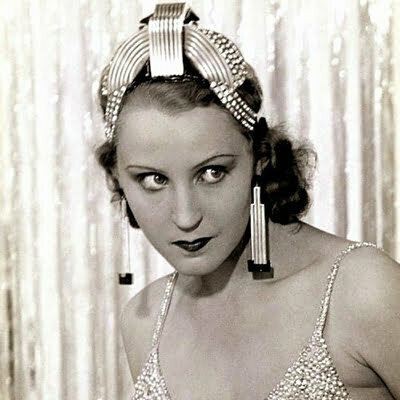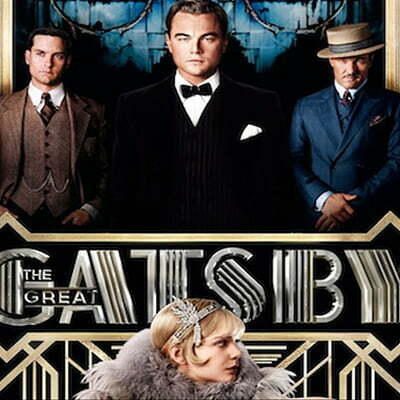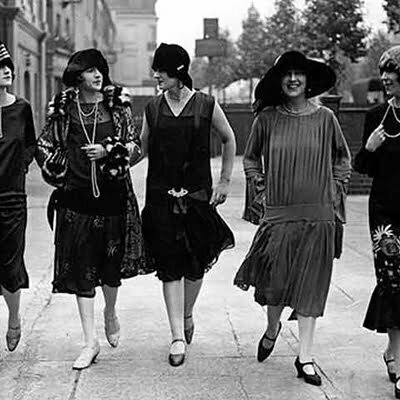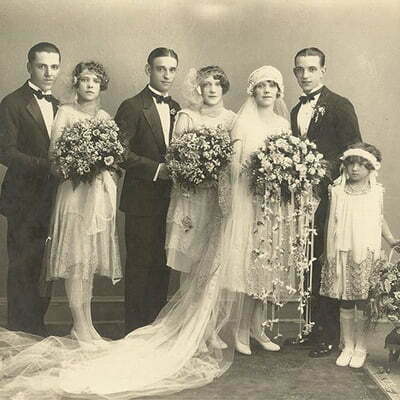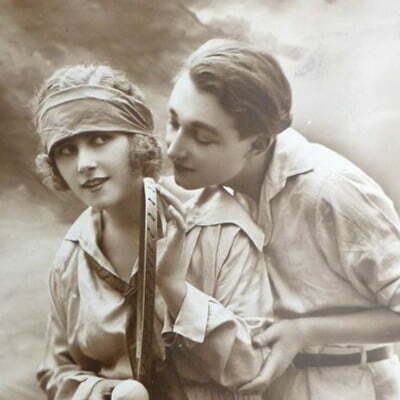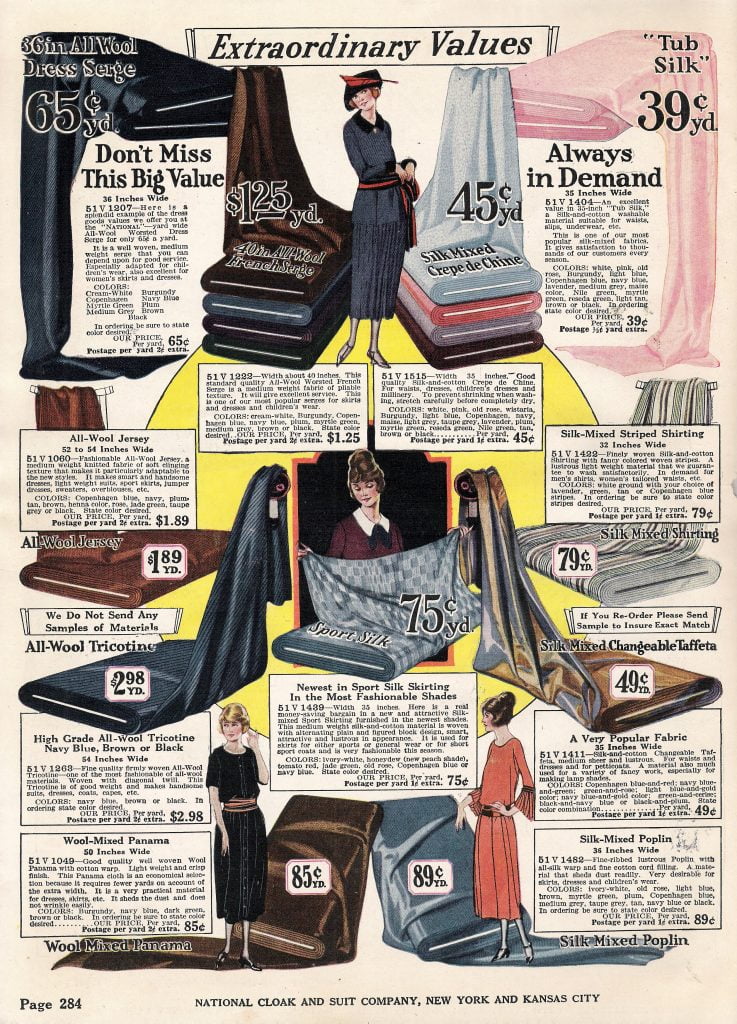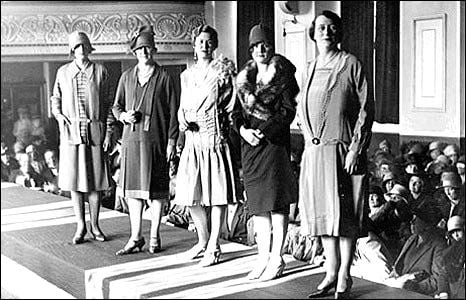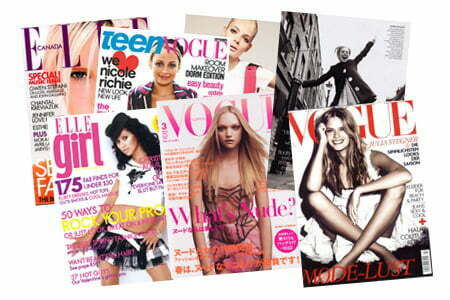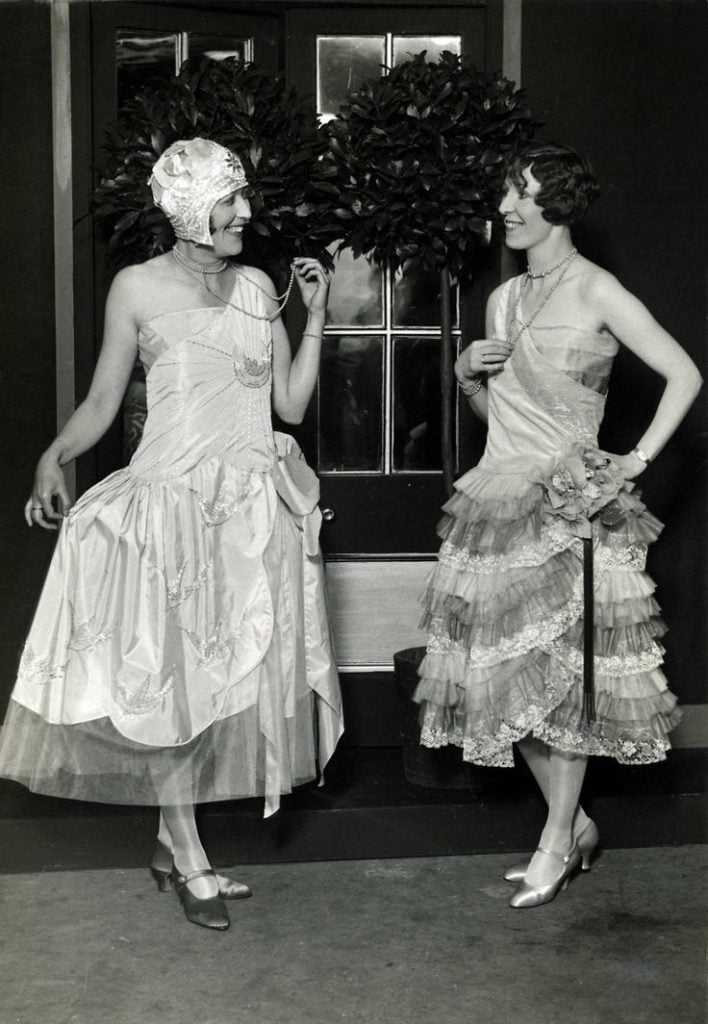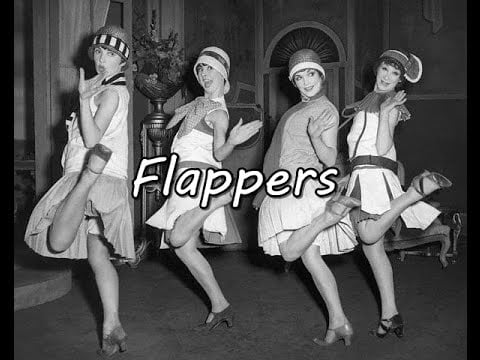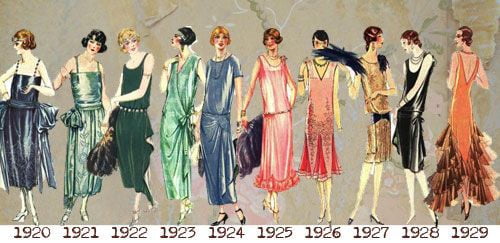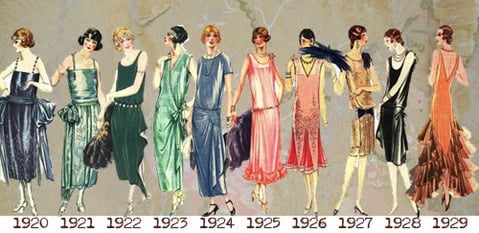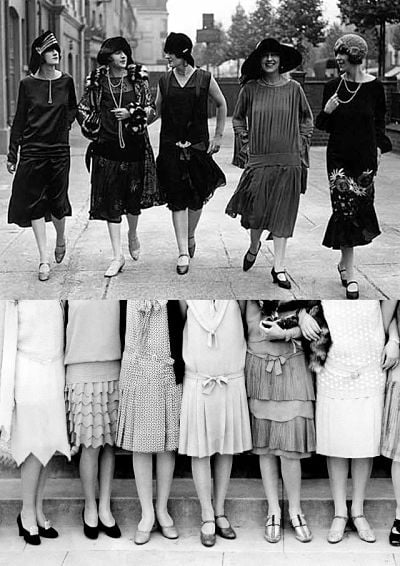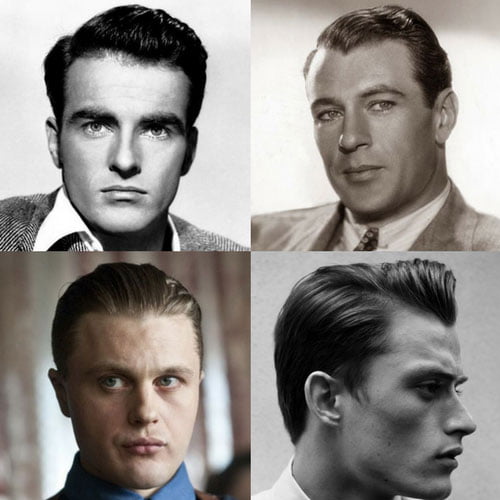1920s Fashion History
20
Nov
Thanksgiving Day is coming. In general, Macy’s group will have a large parade. But because of the in...
15
Sep
5 Influential 1920s Designers: Who were the Big Designers?
The Art Deco movement of the 20s and 30s cut across all areas of innovative design; fashion, archite...
06
Sep
Art Deco Jewelry through History: Flapper Earrings, Necklaces, and Bracelets
Are you in search of vintage jewelry for a Great Gatsby theme party? Why not go with a few beautiful...
05
Sep
Art Deco in Film: The Great Gatsby
Why is the Great Gatsby so memorable? The film adaptation of the 1925 novel by the same title captur...
27
Aug
1920s Women’s Fashion Trends: Vintage Fashion vs Today’s Trends
The 20s marked a radical shift in women's fashion. The layered thin-waisted look that was popular at...
26
Aug
1920s Wedding Trends: Fun & Frivolous from the Roaring ’20s
What was fashionable in the past often looks frivolous for the present. The roaring party life and c...
18
Aug
Art Deco Fashion History: Art Deco Still Popular Design Style Today
The Art Deco movement was a big haute couture thing in the 1920s to the early 1930s. It was a combin...
16
Aug
Fabrics & Colors of 1920’s fashions You May Wanna Know
A person who is looking into the history of fabrics and colours, would surely stumble across the tim...
15
Aug
1920s Department Store Fashion Shows Introduction – 1920s Fashion History
The 1920s was not only the era of flappers, but also an era for departmrnt store fashion show. It sa...
08
Aug
What Women’s Fashion Magazines Were Popular in the 1920s
Before and during the 1920s, advertising in magazines have been a main source of marketing products....
07
Aug
1920s Garcon Silhouette – A Prominent Silhouette of Later 20s
A roaring twenties fashion – Garcon Silhouette
The decade of the 1920s has been highly known after...
01
Jul
20s Flapper Fashion: Great Gatsby Inspired Dresses
20s Flapper Introduction
Compared to what women had been used to wearing in the years before the 19...
01
Jul
1920s Fashion Influences: Men & Women
When the men went to fight the World War I, it became apparent to the woman of that time that they m...
01
Jul
Fashion History: How Fashion Changed in the 1920s
The 20s were a recovery period after the devastating WWI, with wide social and cultural impacts. Wom...
29
Jun
1920s Fashion: Dresses History & Trends
The 20s came with lots of societal changes including changes in women’s fashion. Society was becomin...
29
Jun
1920s Haircuts for Men: Introduction of Roaring 20s Mens Hairstyles
How Did Men Wear Their Hair in the 1920s
In the 1920s, men set the trend with their newfound flashy...

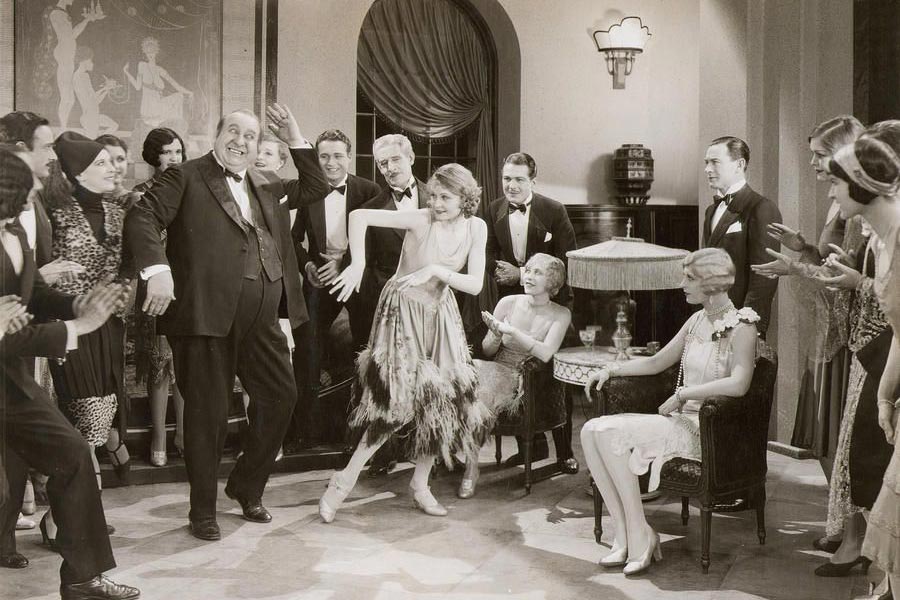 After the shock of the First World War, the collective humanity in Europe and the Americas ushered in the 1920s with much abandon, seeking more fun and freedom. This was reflected in the 20s styles which are aptly captured by the quintessential lively young lady in a knee-length flapper, pump shoes and a cloche hat. Also known as the Roaring 20s or the Jazz Age, it is a decade that saw monumental changes in culture and fashion. Women had achieved a greater degree of freedom as they had been forced to take over many roles when men were off to the war. Ankle-length dresses and restrictive corsets were dumped for looser fitting garments which showed more skin. For men, it was a decade of self-recovery, as many tried to find their footing again after the war. Flashier suits and shoes for those who could afford them were to be had, as well as fancier footwear.
After the shock of the First World War, the collective humanity in Europe and the Americas ushered in the 1920s with much abandon, seeking more fun and freedom. This was reflected in the 20s styles which are aptly captured by the quintessential lively young lady in a knee-length flapper, pump shoes and a cloche hat. Also known as the Roaring 20s or the Jazz Age, it is a decade that saw monumental changes in culture and fashion. Women had achieved a greater degree of freedom as they had been forced to take over many roles when men were off to the war. Ankle-length dresses and restrictive corsets were dumped for looser fitting garments which showed more skin. For men, it was a decade of self-recovery, as many tried to find their footing again after the war. Flashier suits and shoes for those who could afford them were to be had, as well as fancier footwear.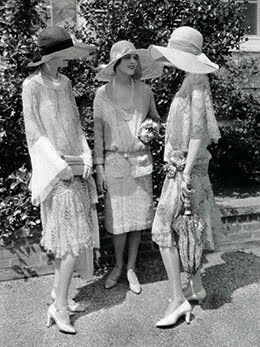 Carrying over from the 1910s was a sense of simplicity and practicality that had been demanded as women took more jobs in factories, offices and the military. The simplicity was forced by the austerity of the war times. This crossover was manifested in the simple one-piece tubular garment dress that was known as the flapper dress. It was loose-fitting, with a dropped waistline, and a raised hemline that reached to the knees.
Carrying over from the 1910s was a sense of simplicity and practicality that had been demanded as women took more jobs in factories, offices and the military. The simplicity was forced by the austerity of the war times. This crossover was manifested in the simple one-piece tubular garment dress that was known as the flapper dress. It was loose-fitting, with a dropped waistline, and a raised hemline that reached to the knees.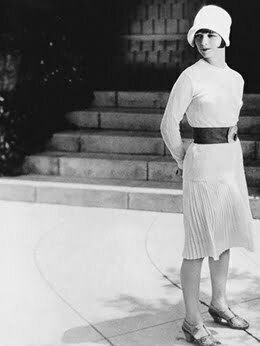 The liberated look extended to underwear. The popular flat and slim silhouette did away with the bulkier undergarments of the past and took to bust bodices, cami-knickers, and eventually knickers and panties. Rayon was the textile of choice for women’s underwear and came in soft light colors to blend in with the light fabric flappers.
The liberated look extended to underwear. The popular flat and slim silhouette did away with the bulkier undergarments of the past and took to bust bodices, cami-knickers, and eventually knickers and panties. Rayon was the textile of choice for women’s underwear and came in soft light colors to blend in with the light fabric flappers.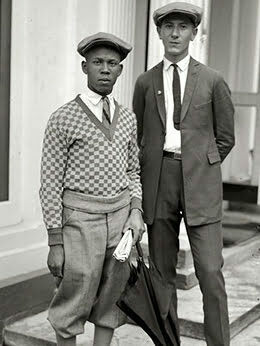 The suit remained central to men’s 1920s outfits. In the early 20s, the slim silhouette was still in vogue. This featured a tight-fitting jacket and narrow shoulders, conservative colors; black, grey and navy blues. The Jazz suit emerged as part of the new jazz and club culture. This featured skinny trousers with pinched in waists, worn with form-fitting jackets with small lapels. From England came a loose and wide suit called the Oxford suit. Oxford University had banned the popular breeches (knickerbockers). Cheeky students took to wearing wide-legged trousers on top of the breeches to bypass this rule when the occasion demanded. This popularized a baggy form suit that was often worn with patent leathers and a fedora hat.
The suit remained central to men’s 1920s outfits. In the early 20s, the slim silhouette was still in vogue. This featured a tight-fitting jacket and narrow shoulders, conservative colors; black, grey and navy blues. The Jazz suit emerged as part of the new jazz and club culture. This featured skinny trousers with pinched in waists, worn with form-fitting jackets with small lapels. From England came a loose and wide suit called the Oxford suit. Oxford University had banned the popular breeches (knickerbockers). Cheeky students took to wearing wide-legged trousers on top of the breeches to bypass this rule when the occasion demanded. This popularized a baggy form suit that was often worn with patent leathers and a fedora hat.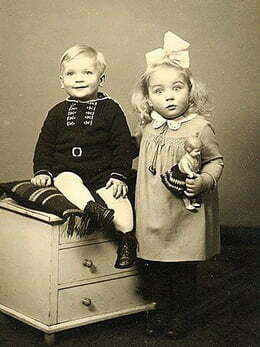 Children’s wear became more adapted to higher physical activity and play. Cotton and wool replaced velvet and silk as they were sturdier fabrics and more comfortable during play. Children’s shoes began to be made of canvas with rubber soles. For girls, the dresses became shorter and looser, while boys wore knee-length shorts. Higher quality wool tailoring allowed for cardigans and sweaters, which could be worn in cooler weather. The emergence of departmental stores even in rural areas, meant that fashionable looks for children were followed as closely as those of the adults.
Children’s wear became more adapted to higher physical activity and play. Cotton and wool replaced velvet and silk as they were sturdier fabrics and more comfortable during play. Children’s shoes began to be made of canvas with rubber soles. For girls, the dresses became shorter and looser, while boys wore knee-length shorts. Higher quality wool tailoring allowed for cardigans and sweaters, which could be worn in cooler weather. The emergence of departmental stores even in rural areas, meant that fashionable looks for children were followed as closely as those of the adults.